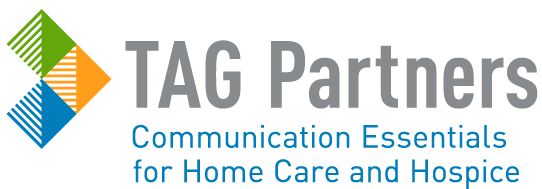The final part of our series on Marketing your CMS Hospice Compare Scores covers Quality of patient care. These compare scores are based on data gathered through the HIS Comprehensive Assessment Measure.
Percentage of patients getting at least one visit from a registered nurse, a physician, a nurse practitioner, or a physician assistant in the last 3 days of life. This measure assesses how the hospice team addressed the needs of the family and patient in the final days of life. Certainly, marketing this score is advisable only if it is above 90%. Families researching hospice agencies for a loved one would want to choose an agency who provides attentive care during the difficult final days of life. A lower score to this query indicates a staffing issue. (National Average 82.3%)
Patients who got an assessment of all 7 HIS quality measures at the beginning of hospice care to meet the HIS Comprehensive Assessment Measure requirements. This is a composite score of the 7 HIS measures. (National Average 86.4%)
The Seven Measures that make up the HIS Comprehensive Assessment Measure:
Patients or caregivers who were asked about treatment preferences like hospitalization and resuscitation at the beginning of hospice care. A high score here can be achieved by having initial discussions with patients about what they do and do not want at the end of life. (National Average 99.1%)
Patients and caregivers who were asked about their beliefs and values at the beginning of hospice care. A high score here can be achieved by giving patients and their family the opportunity to discuss their spiritual and religious beliefs to help ensure these needs are met throughout the dying experience. The patient beliefs can differ from that of the family. It is vitally important to honor the beliefs of the patient and to provide compassionate family mediation. (National Average 96.6%)
Patients who were checked for pain at the beginning of hospice care. Pain is common for hospice patients, and pain management can be difficult for late stage terminal patients. Checking for pain at the beginning of care can provide assigned team members with a gauge to help them stay in front of patient pain and boost scores on this measure. (National Average 96.8%)
Patients who received timely and through pain assessment when pain was identified as a problem. The team should document the pain intensity, location, and duration within 24 hours of discovering that pain has become a problem. (National Average 90.3%)
Patients who were checked for shortness of breath at the beginning of hospice care. Shortness of breath is common for terminal patients and can cause distress and anxiety to both patient and caregiver. For optimum care management teams should assess and document patient breathing at the start of hospice care. (National Average 98.2%)
Patients who got timely treatment for shortness of breath. Team members should start treatment within 24 hours of discovering that breathing has become a problem. (National Average 96.3%)
Patients taking opioid medication who were offered care for constipation. Team members should recommend preventative treatments such as laxatives or fiber enriched diets to avoid opioid-related constipation. (National Average 94.1%)
Reviewing your agency’s compare scores should be a routine part of your continuous improvement program. Superior patient care and satisfaction are both firm foundations to build your business on. Above average scores can translate to referrals, and we offer a referral building tool to highlight them. Visit the TAG Webstore or call us at 866-232-6477 for more information on our Choosing Hospice Flyer for Physicians and take the next step in successful hospice marketing.



